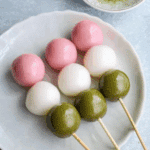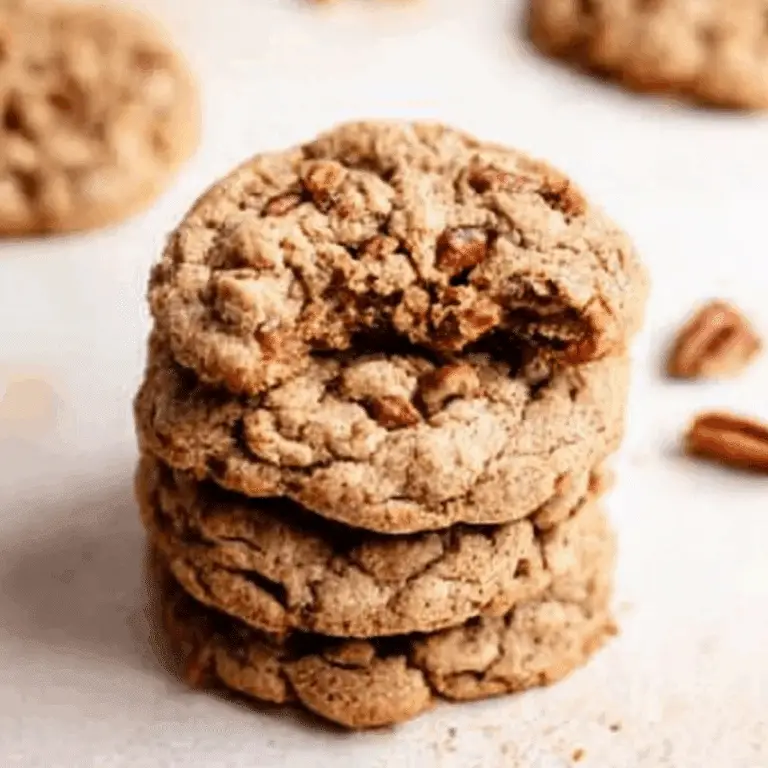Dango is a delightful Japanese dessert that is both chewy and sweet, making it a perfect treat for any occasion. This Dango recipe is not only simple to make but also captures the essence of Japanese tradition. With its beautiful colorful rice balls, it is a great way to introduce yourself to the world of Asian sweets, especially during the spring season. Whether you’re planning a spring picnic or looking for a fun and tasty dessert to serve at home, this recipe will surely satisfy your cravings.

Table of Contents
What Makes This Dango Recipe Special
This Dango recipe stands out due to its simplicity and versatility. The chewy texture of the rice balls, combined with their mild sweetness, creates a perfect balance of flavors. Made with just a few ingredients like rice flour, matcha powder, and food coloring, these treats come together quickly and beautifully. They are traditionally served on skewers, making them easy to enjoy on the go or at a picnic, especially during Hanami (cherry blossom viewing) season.
Ingredients
• Joshinko Glutinous Rice Flour: A key ingredient for the Dango base, providing a chewy texture.
• Shiratamako Glutinous Sweet Rice Flour: Adds sweetness to the dough and enhances the chewy consistency.
• Powdered Sugar: Optional but recommended for added sweetness.
• Hot Water: Helps to form the dough, bringing all ingredients together into a soft, clay-like consistency.
• Matcha Powder: For flavor and a vibrant green color.
• Pink Food Coloring: Adds a beautiful pastel pink color, symbolizing cherry blossoms during spring.
Alternative Ingredient Suggestions
If you prefer a healthier twist on this Dango recipe, consider swapping the pink food coloring with beet juice for a natural, vibrant hue. For a gluten-free version, you can use gluten-free rice flour, though it may slightly alter the texture.
Step-by-Step Instructions
- Soak the Skewers: Begin by soaking your bamboo skewers in water to prevent them from burning while cooking.
- Mix the Rice Flour and Water: In a bowl, combine the Joshinko and Shiratamako rice flours. Slowly add hot water, mixing with a spoon until it forms a dough. When it becomes dough-like, knead it by hand.
- Divide the Dough: Divide the dough into three equal portions. Place each portion into separate bowls.
- Color the Dough:
- For the pink dough, add a drop of pink food coloring and mix well until the dough is completely pink.
- For the green dough, dissolve 1 teaspoon of matcha powder in water to make a paste, then mix it into one portion of the dough.
- Leave the third portion of dough uncolored (white).
- Shape the Dough into Balls: Using a kitchen scale, weigh each piece of dough to approximately 20 grams. Roll each portion into a smooth ball.
- Cook the Dango: Bring a pot of water to a boil. Start with the white balls, adding them to the pot. Once the balls rise to the surface, cook them for an additional 2 minutes.
- Skewer the Dango: After cooking, remove the balls from the water and let them cool slightly before skewering them onto bamboo sticks.

Tips & Tricks
- Avoid Overcooking: Be careful not to overcook the Dango balls. Once they float to the top, it’s important to cook them for only an additional 2 minutes to maintain the perfect chewy texture.
- Texture Check: If the dough feels too sticky, add a little more rice flour. If it’s too dry, add a bit more water until you achieve a smooth and moldable dough.
- Serving: Serve Dango on skewers for a traditional look. They can be enjoyed warm or chilled.
Pairing Ideas and Variations
Hanami Dango pairs wonderfully with other Japanese sweets such as Mochi Donuts or Ube Ice Cream. If you want to make it more festive, drizzle with a little honey or serve with a matcha-flavored dipping sauce. For a spicier variation, consider adding a pinch of chili powder to the green dough for a unique twist.
A Taste of Tradition: Why Dango Is Perfect for Spring
Dango is more than just a dessert; it holds cultural significance in Japan, especially during the cherry blossom season. The three colors of Dango—pink, white, and green—represent the changing seasons, from the pink of spring to the white of winter and the green of summer. This makes Dango a beautiful, symbolic treat to enjoy while celebrating nature’s beauty during springtime.
In conclusion, this easy Dango recipe is a fantastic way to introduce Japanese desserts into your culinary repertoire. The chewy texture, sweet flavor, and vibrant colors make it both delicious and visually appealing. Whether you’re enjoying it as a snack, dessert, or at a celebration, Dango is sure to bring joy to your table.
Conclusion
This Dango recipe is a simple yet delicious way to enjoy a traditional Japanese treat. Its chewy texture and subtly sweet flavors make it the perfect dessert for any occasion, especially during spring when the cherry blossoms are in full bloom. With just a few ingredients and a little preparation, you can create a vibrant and satisfying dessert that will impress your friends and family. Whether served as a snack, dessert, or a fun treat for a party, Dango is sure to bring a taste of Japan to your kitchen.
FAQs
1. Can I make Dango without food coloring?
Yes, you can absolutely make Dango without food coloring. The traditional Dango is often white, and you can omit the pink and green dough portions if you’d like a simpler version. However, the vibrant colors are part of the seasonal charm!
2. How long can Dango be stored?
Dango is best enjoyed fresh, but it can be stored in an airtight container in the refrigerator for up to 2-3 days. For the best texture, reheat them slightly before serving.
3. Can I make Dango gluten-free?
Yes, you can make gluten-free Dango by using a gluten-free rice flour, but the texture may differ slightly from the traditional version. It will still be chewy and delicious!
More Relevant Recipes
- Homemade Spiced Honey Pear Jam Recipe
- Milk Rice Cake: The Best Chewy Dessert in Just 15 Minutes
- Healthy Strawberry Mochi Made in the Microwave

Dango Recipe
- Total Time: 30 minutes
- Yield: 6 servings
- Diet: Vegetarian
Description
Dango is a traditional Japanese dessert made of chewy rice flour balls, often served on skewers. This simple and delightful recipe captures the essence of Japanese springtime, with a mild sweetness and vibrant colors.
Ingredients
- Joshinko Glutinous Rice Flour: 1 cup (provides a chewy texture for the Dango balls).
- Shiratamako Glutinous Sweet Rice Flour: 1/2 cup (adds sweetness and enhances the chewy consistency).
- Powdered Sugar: 2 tablespoons (optional for added sweetness).
- Hot Water: 1/2 cup (helps form the dough and bind the ingredients together).
- Matcha Powder: 1 teaspoon (adds a green color and distinct flavor to the dough).
- Pink Food Coloring: A few drops (used for the pink-colored dough, adding a visual appeal for spring).
Instructions
- Soak bamboo skewers in water to prevent burning during cooking.
- Combine Joshinko and Shiratamako rice flours in a bowl, then slowly add hot water to form a dough.
- Divide the dough into three equal portions and color each one separately—pink with food coloring, green with matcha powder, and leave one portion white.
- Weigh and roll each portion into 20-gram balls.
- Bring water to a boil and cook the white dough balls first. Once they float to the surface, cook for another 2 minutes.
- Remove the cooked balls and skewer them onto bamboo sticks.
Notes
- If the dough feels too sticky, add more rice flour. If it’s too dry, add a little more water.
- Dango is best enjoyed fresh, but it can be stored in the fridge for 2-3 days.
- For a gluten-free version, use gluten-free rice flour, though the texture may differ slightly.
- Prep Time: 20 minutes
- Cook Time: 10 minutes
- Category: Dessert
- Method: Boiling
- Cuisine: Japanese
Nutrition
- Serving Size: 1 skewer (3 balls)
- Calories: 120
- Sugar: 5g
- Sodium: 5mg
- Fat: 0g
- Saturated Fat: 0g
- Unsaturated Fat: 0g
- Trans Fat: 0g
- Carbohydrates: 30g
- Fiber: 1g
- Protein: 2g
- Cholesterol: 0mg






